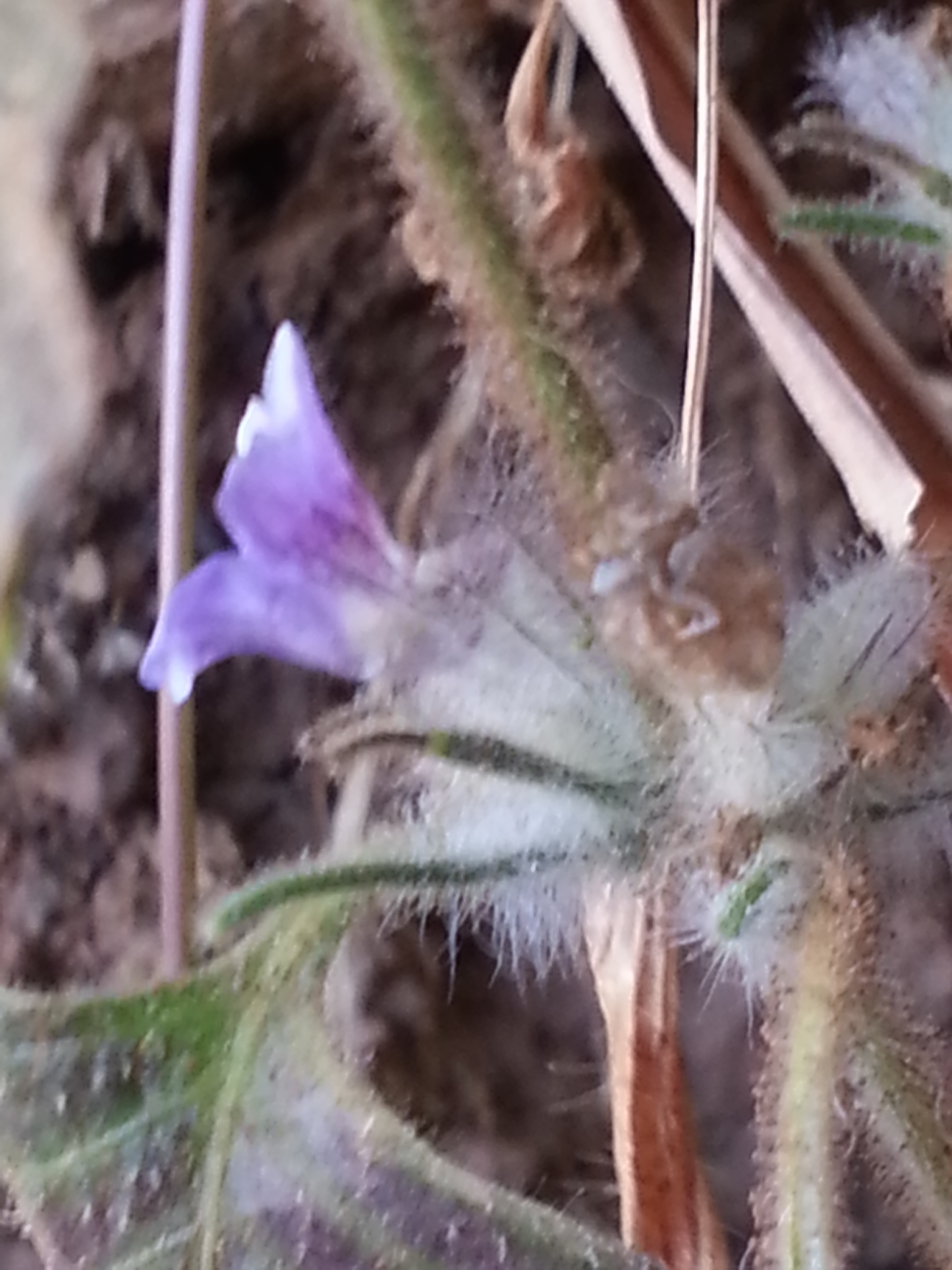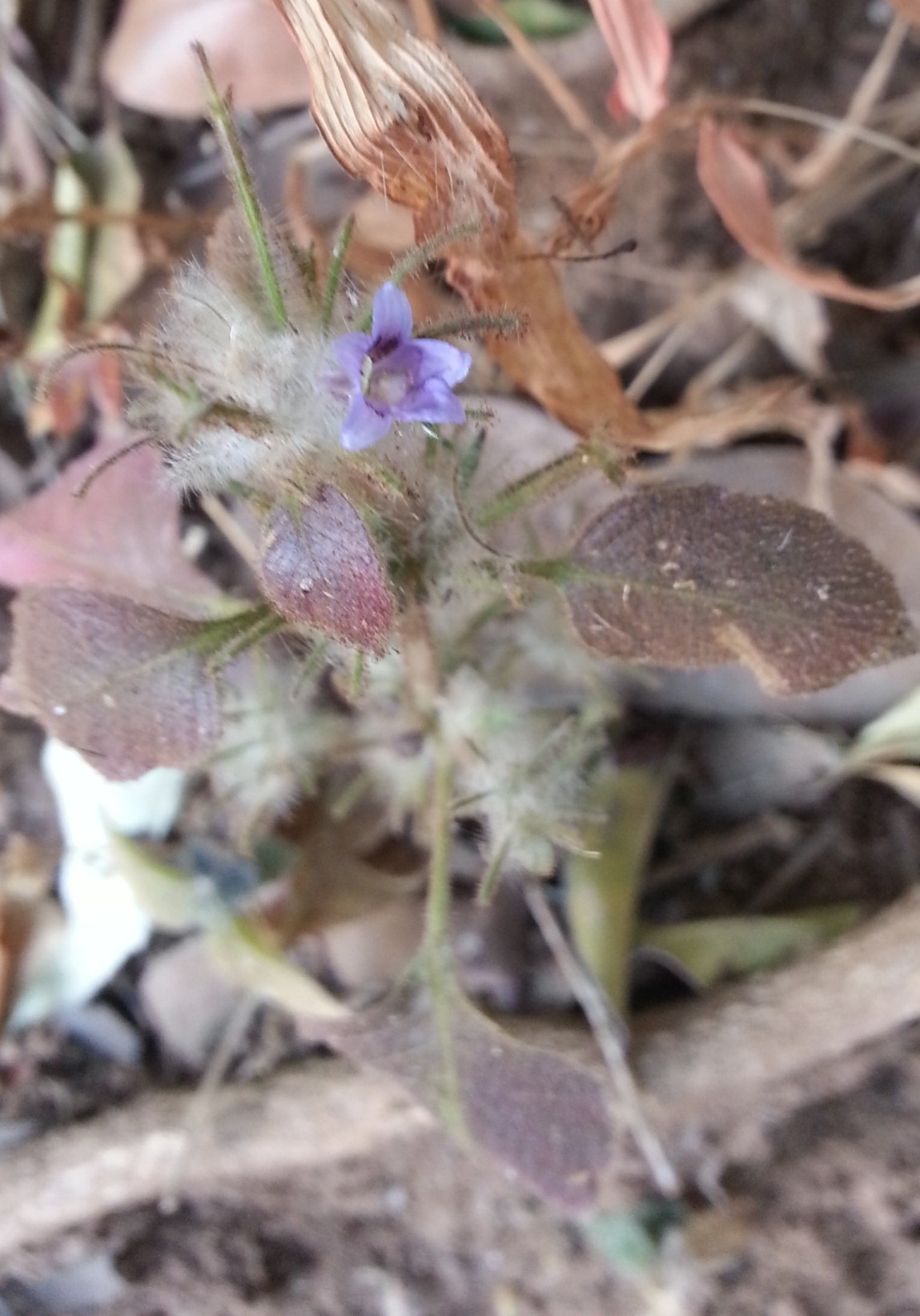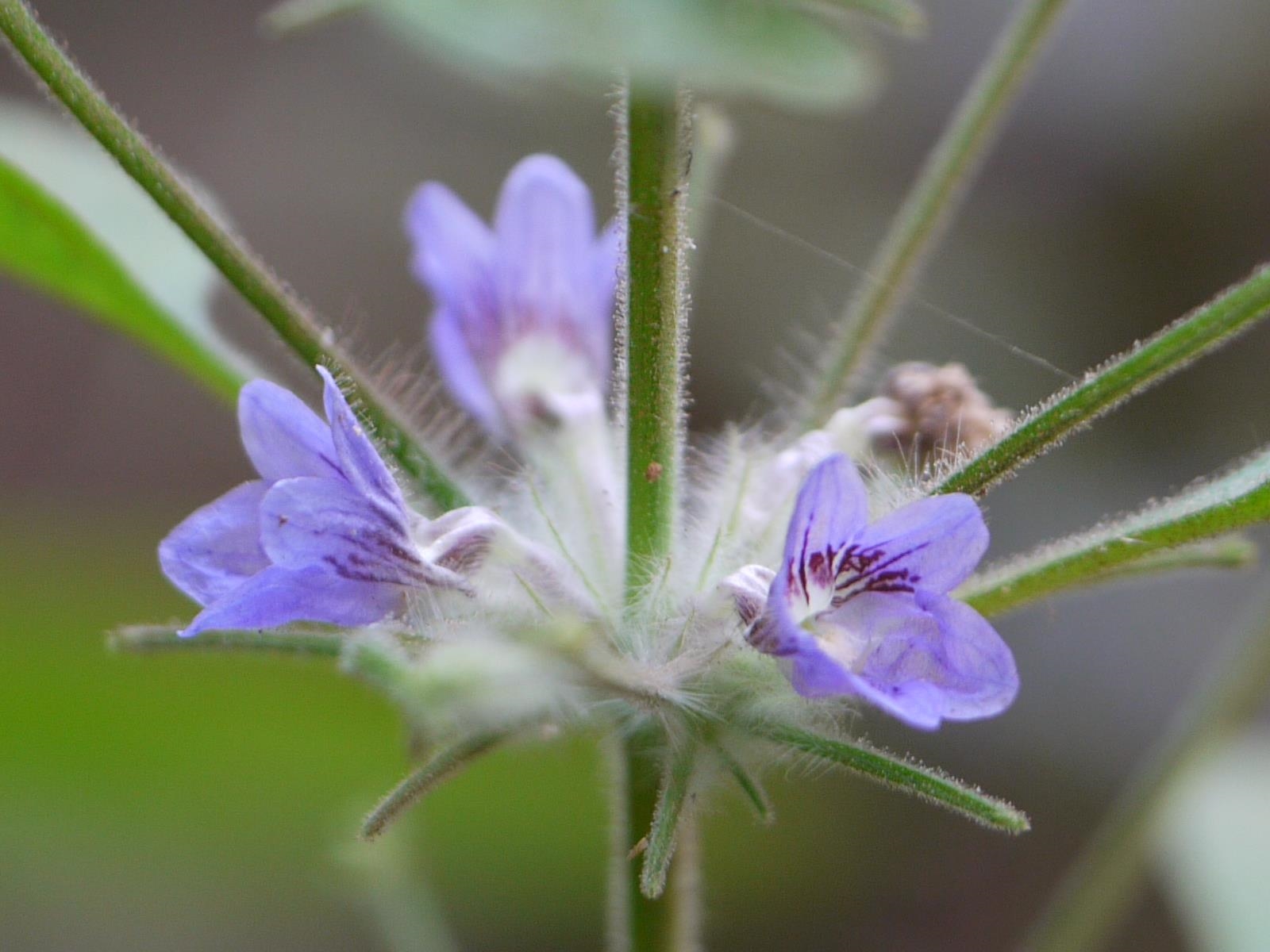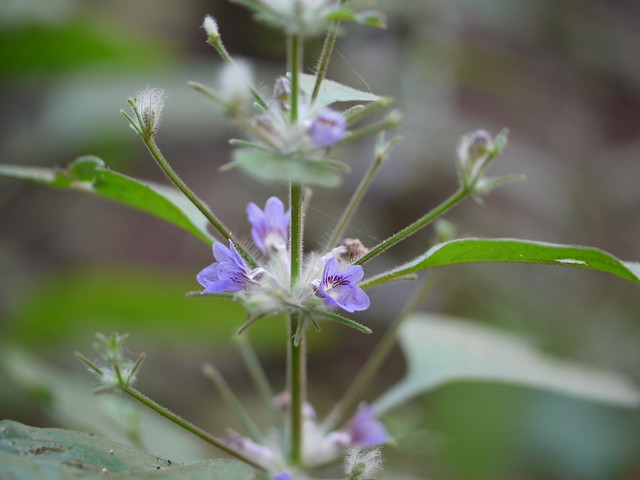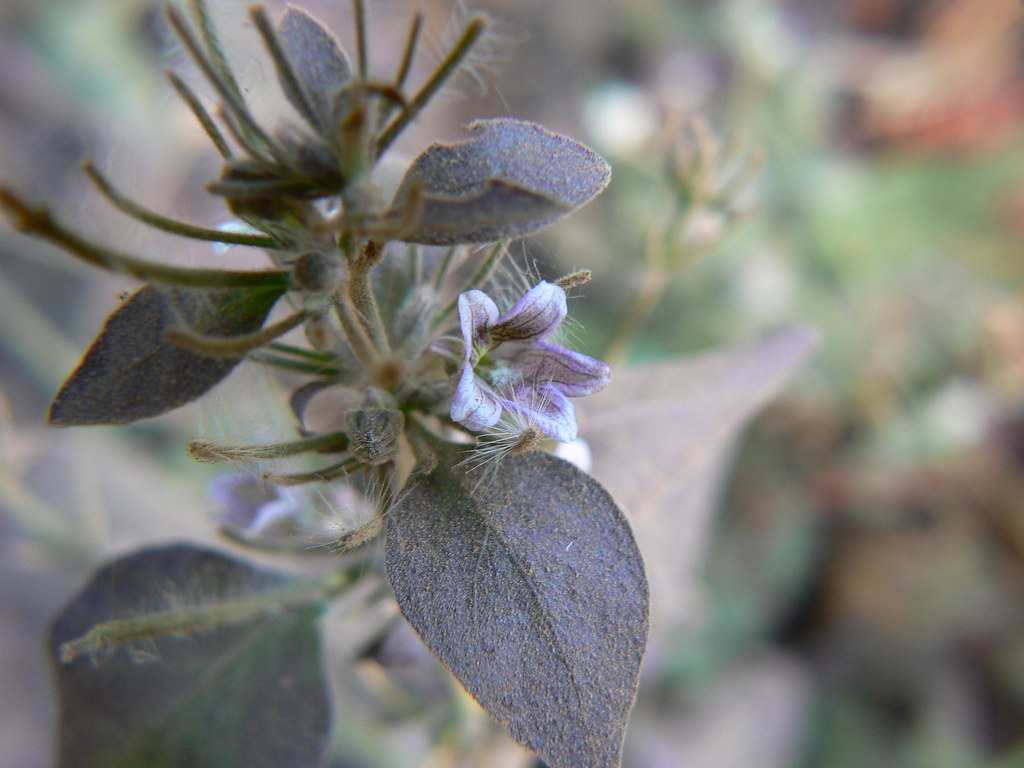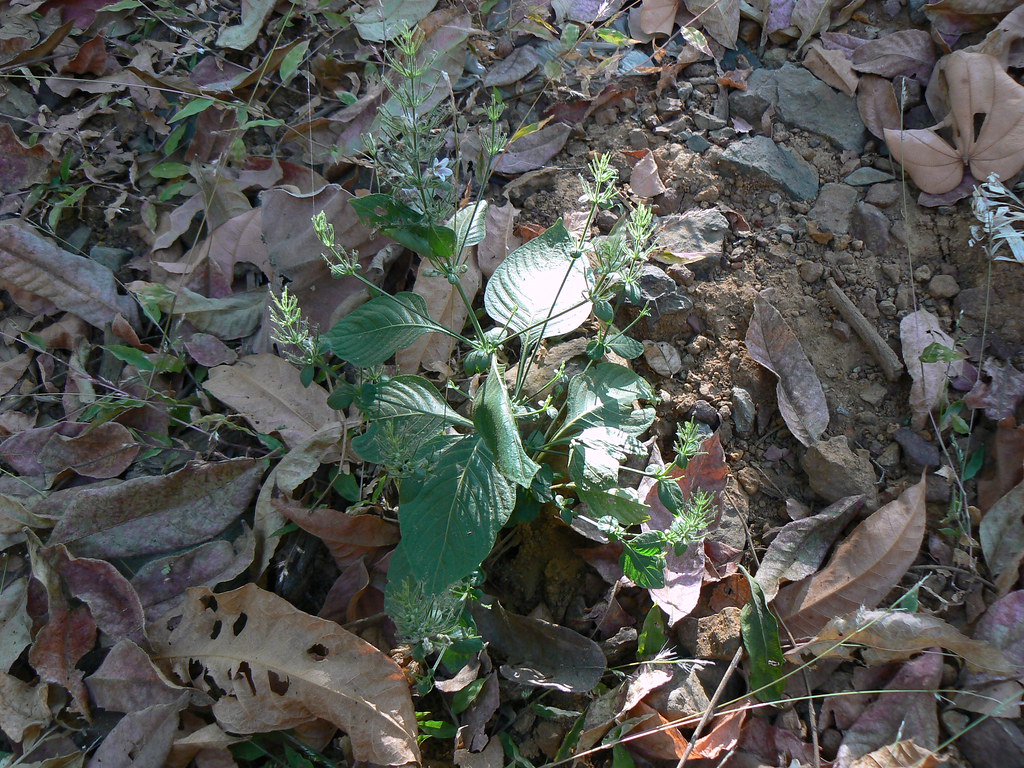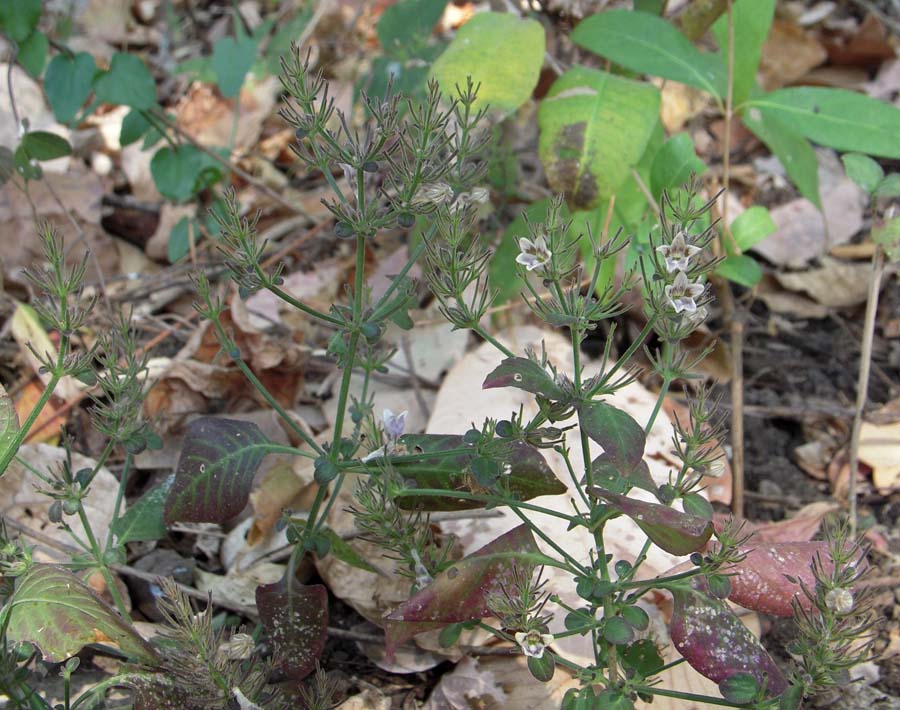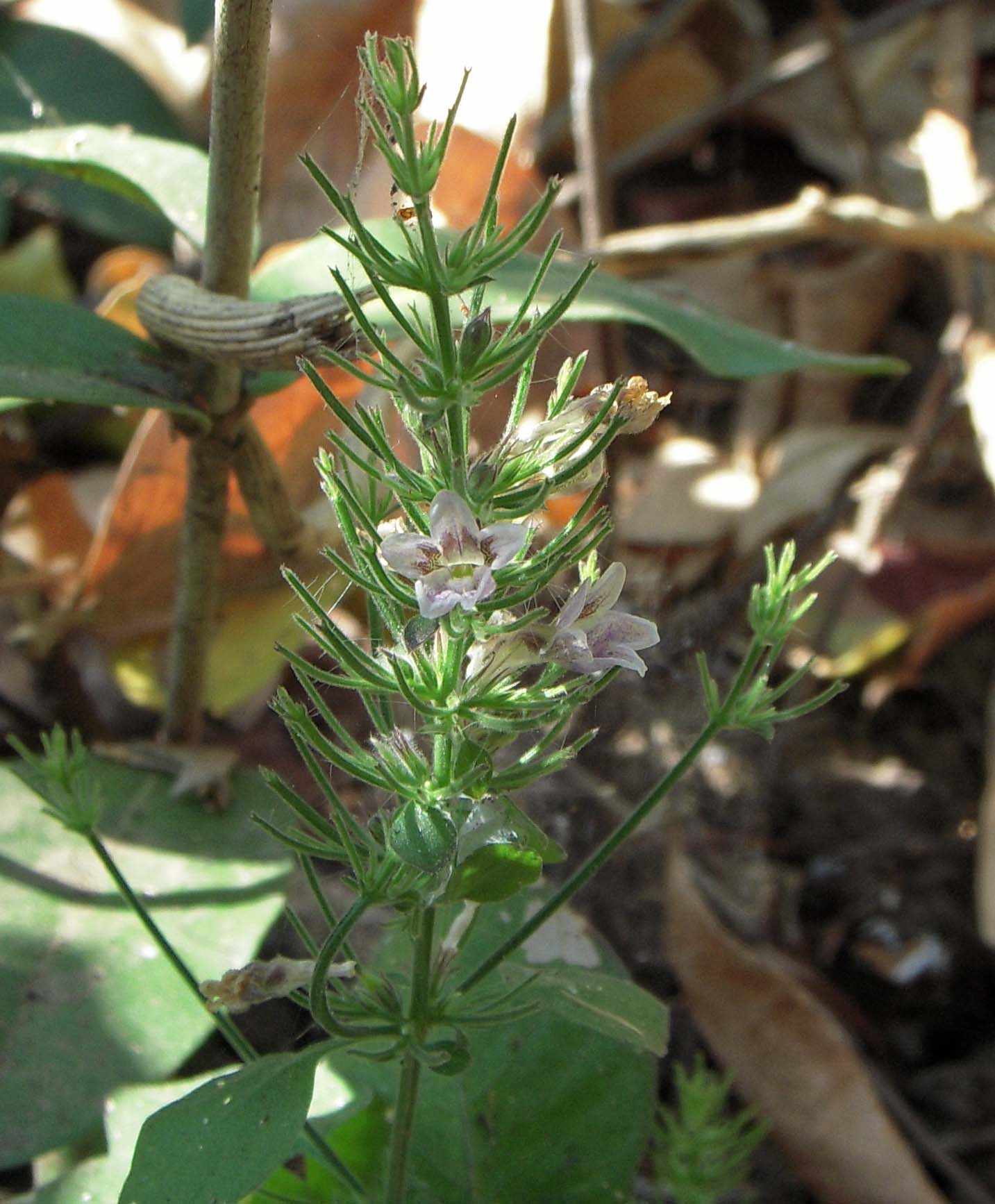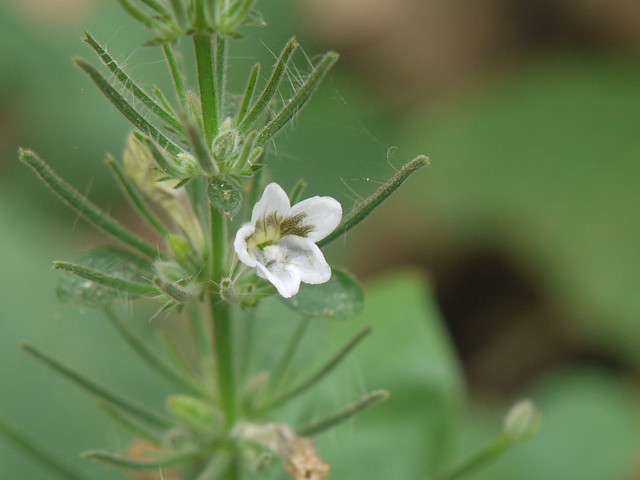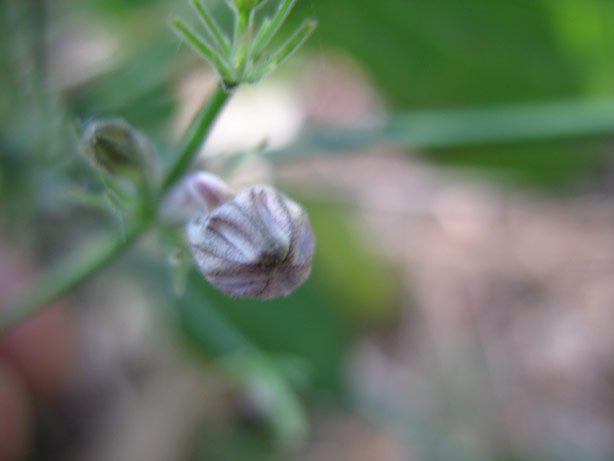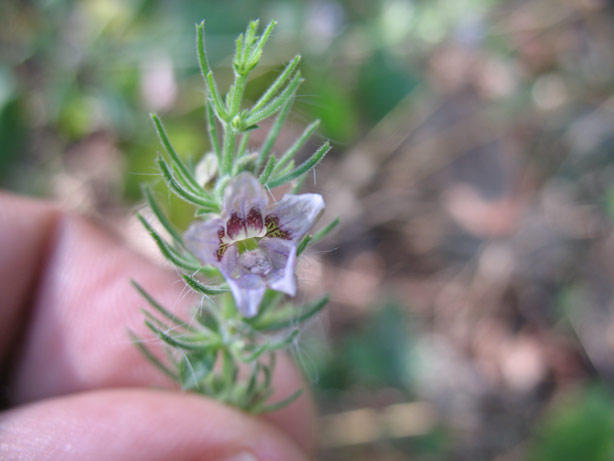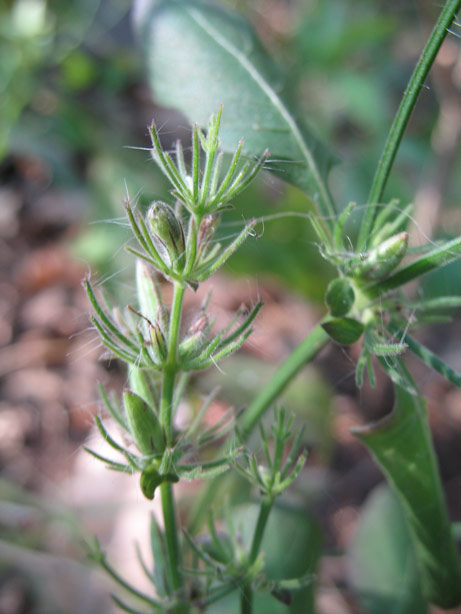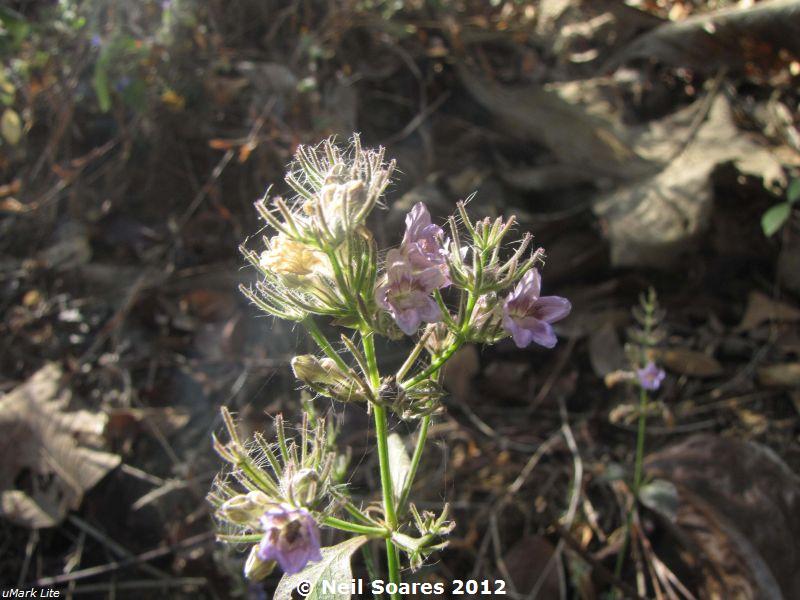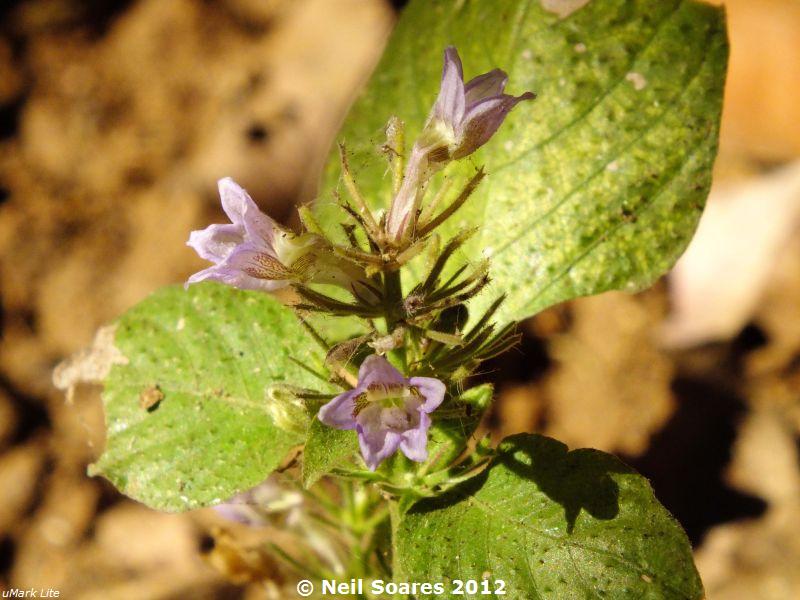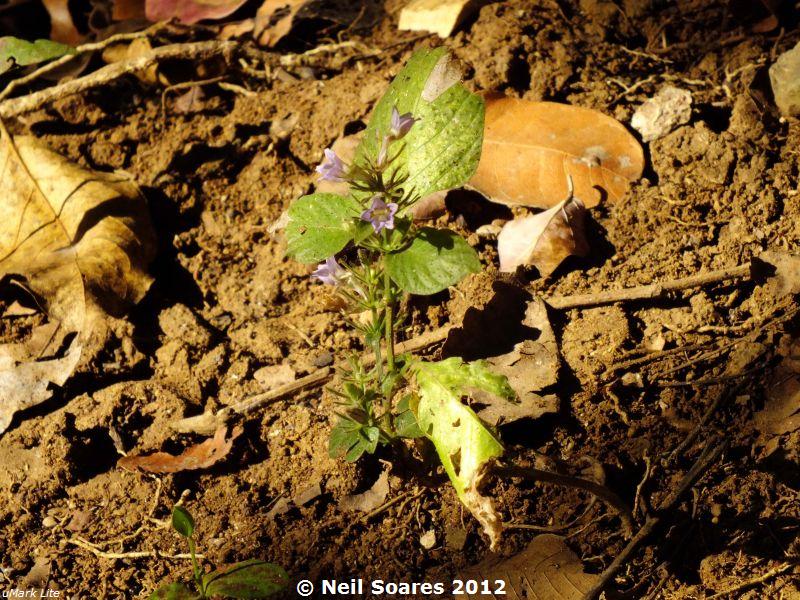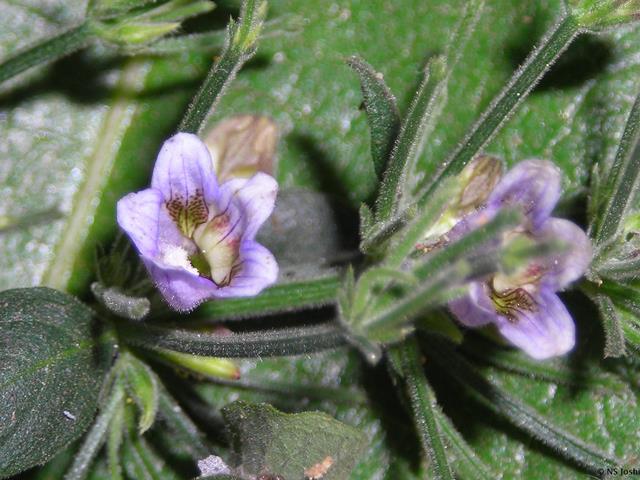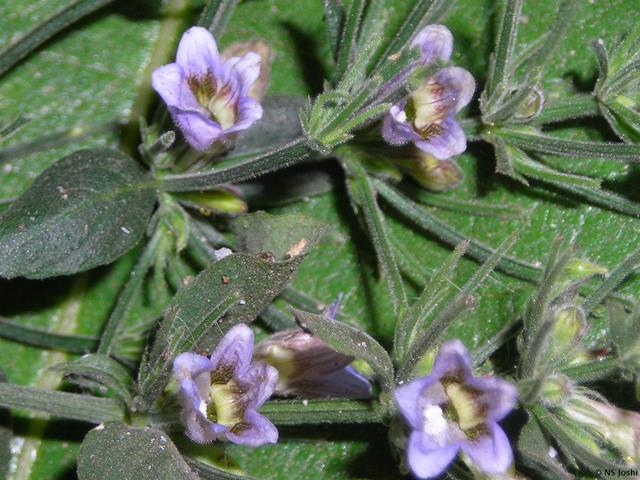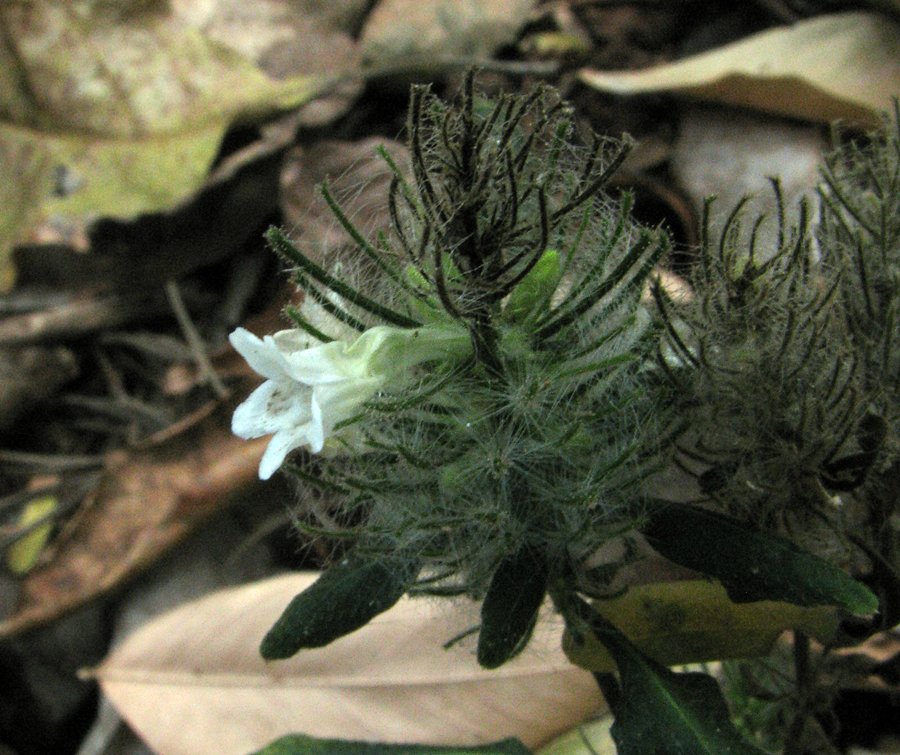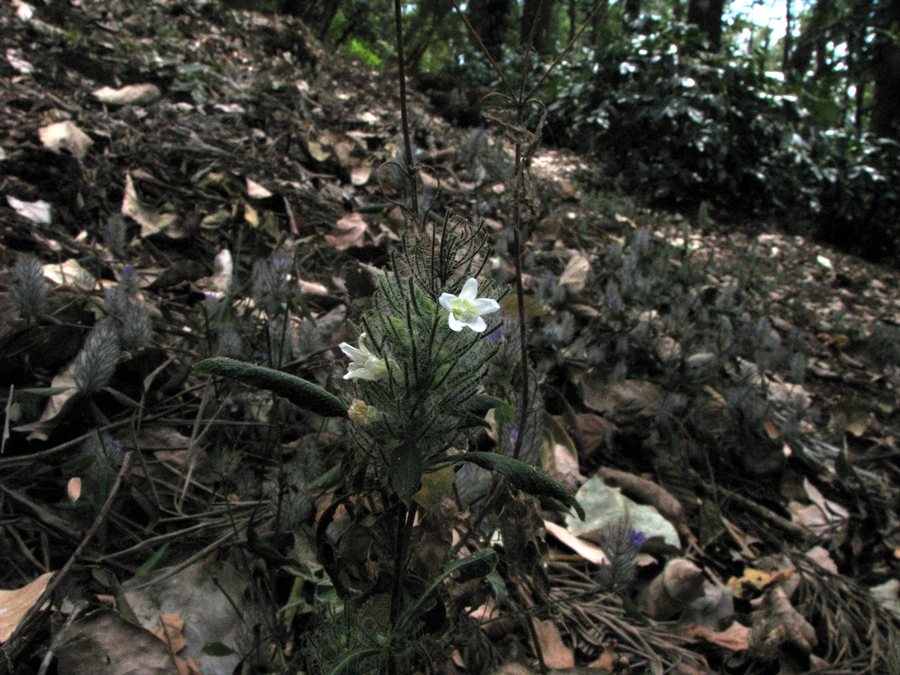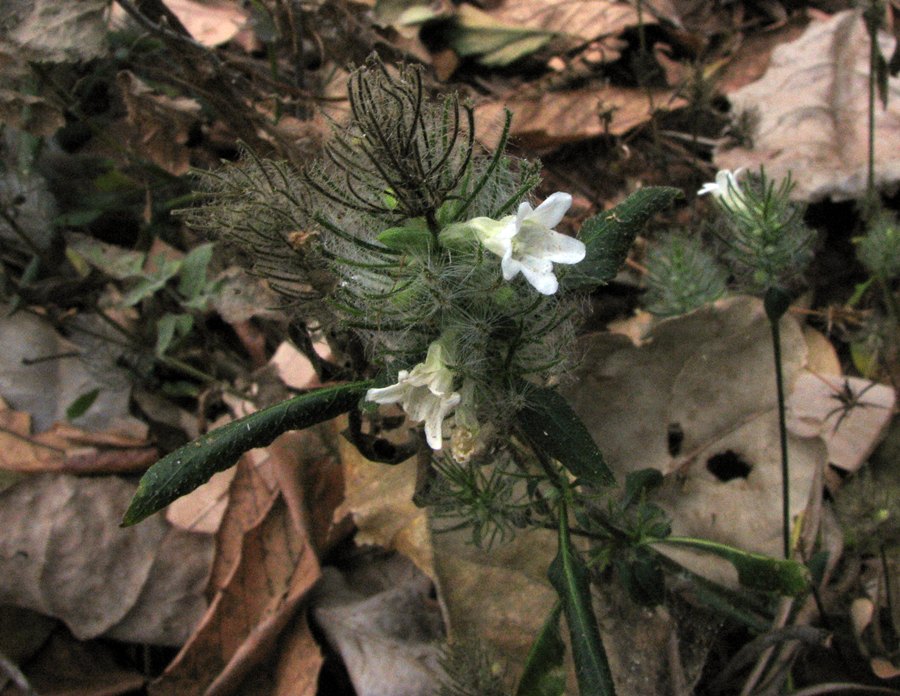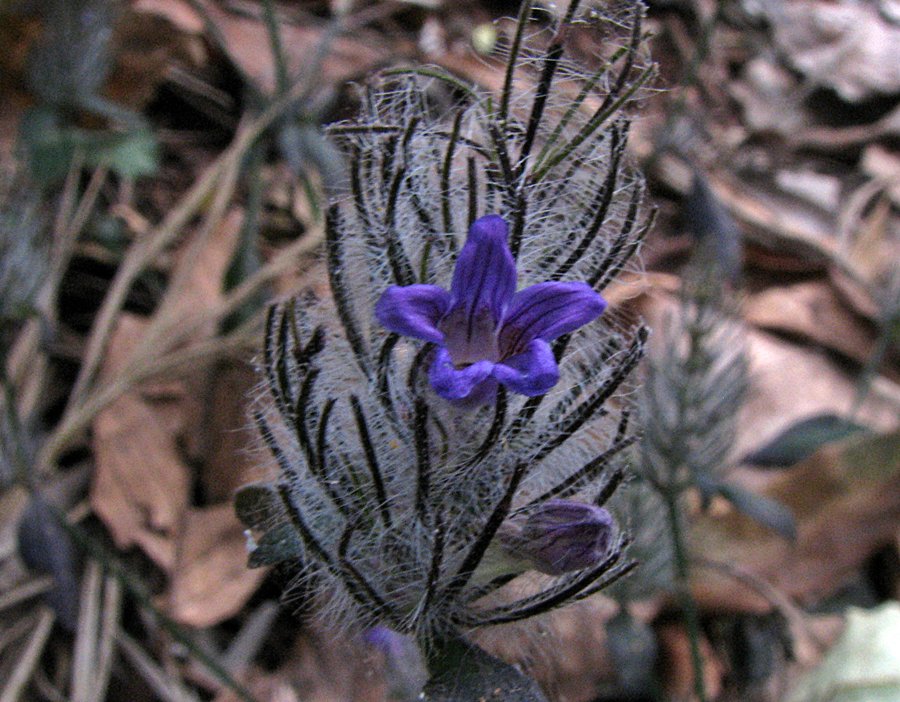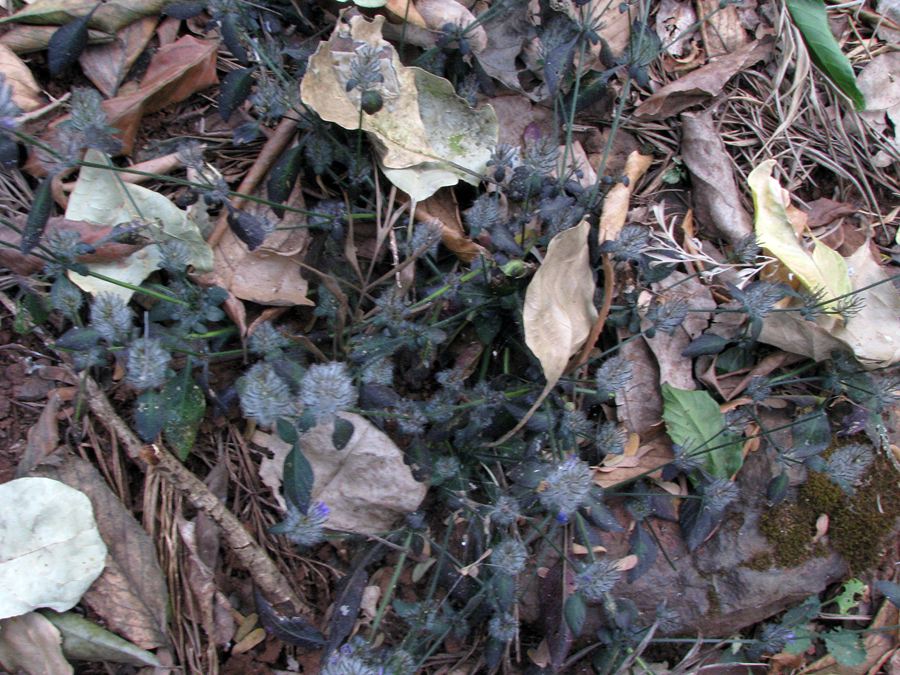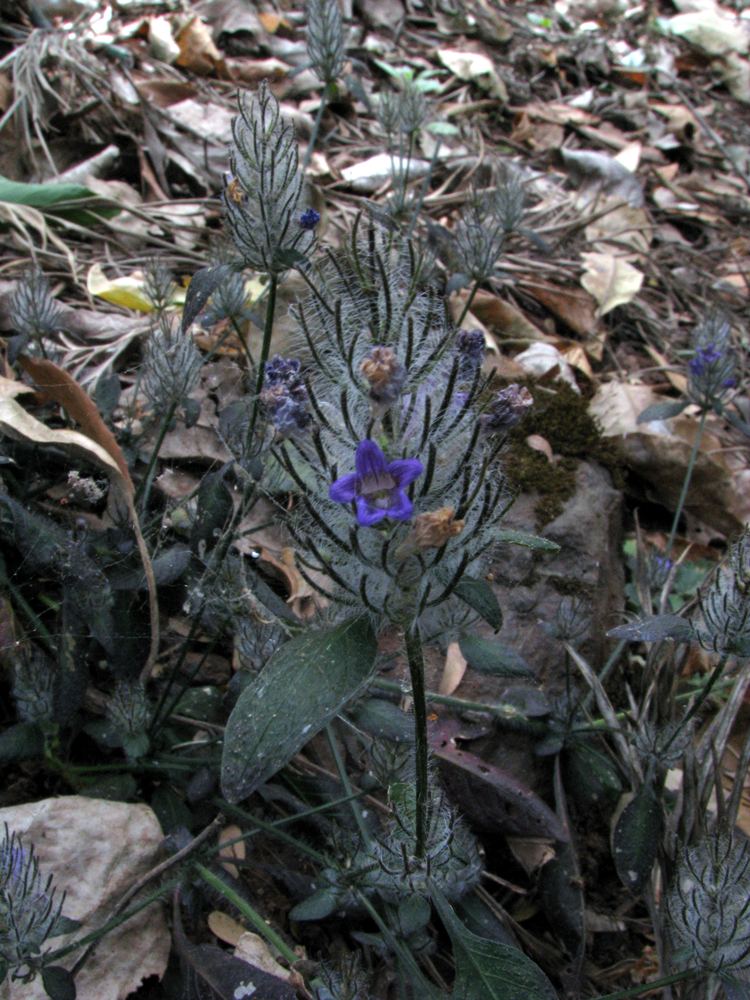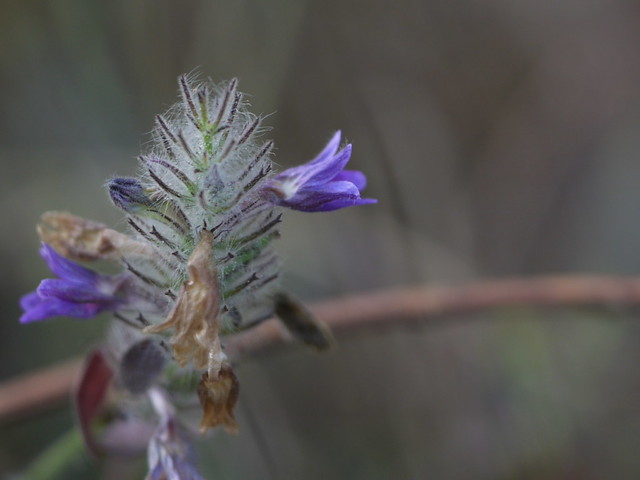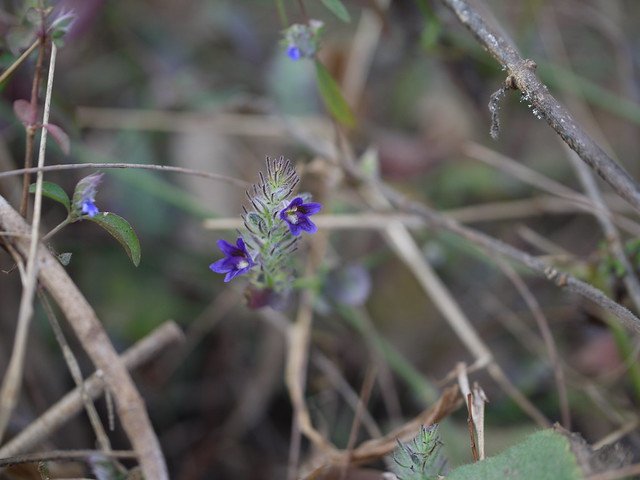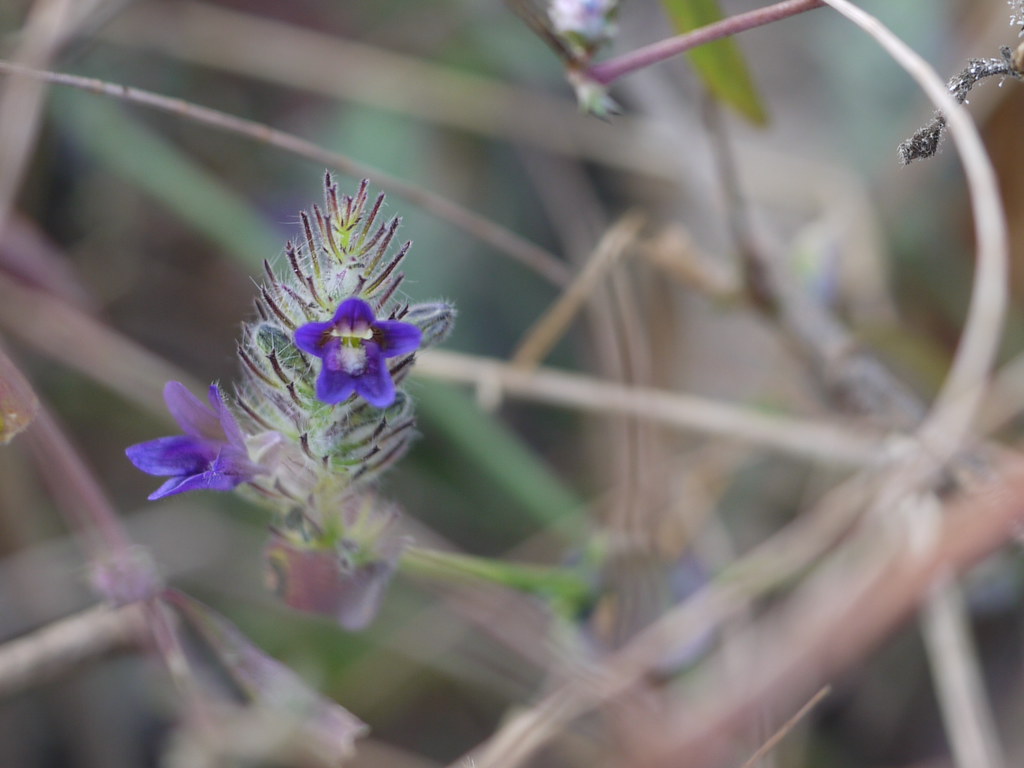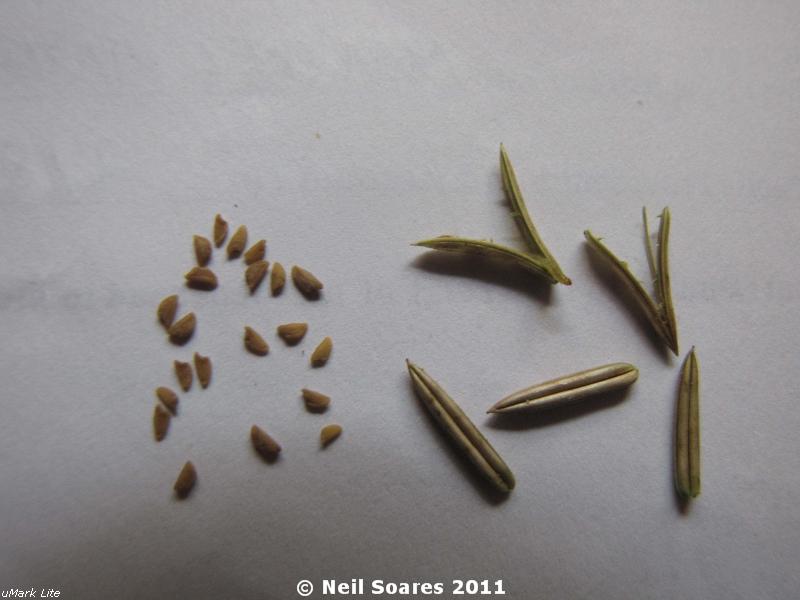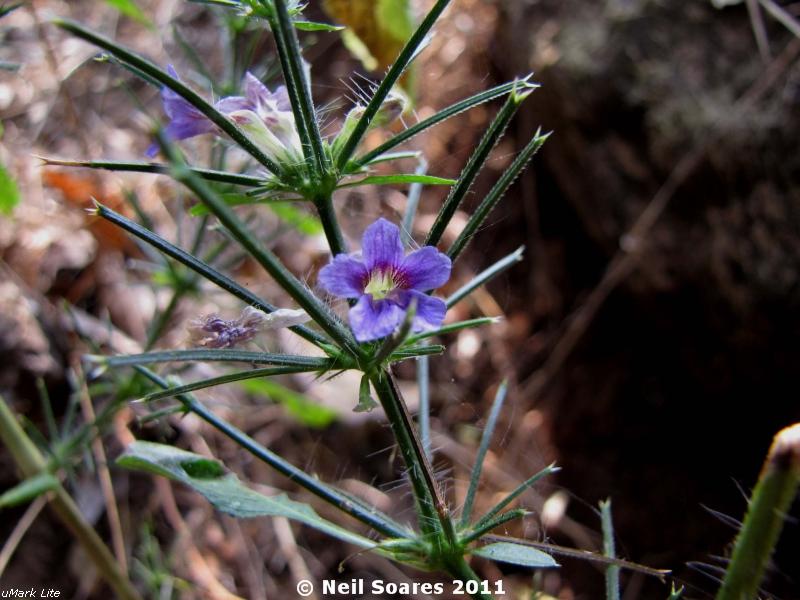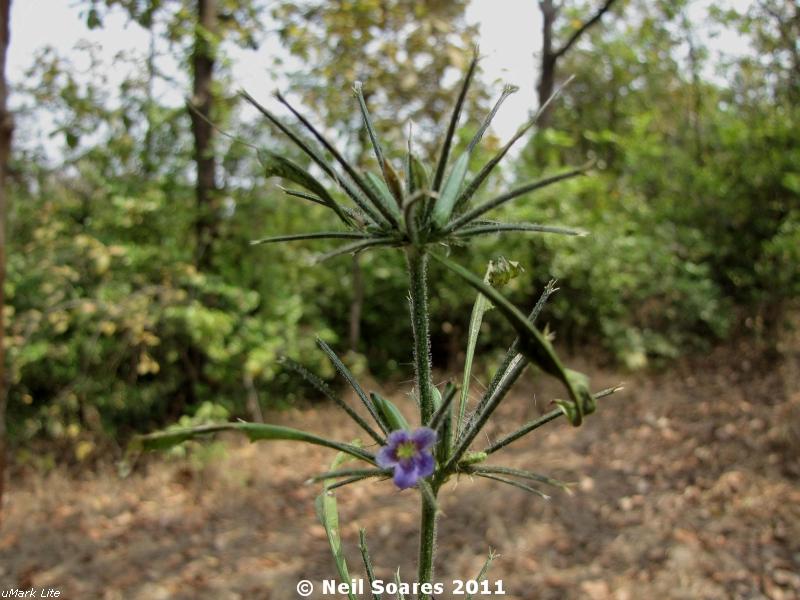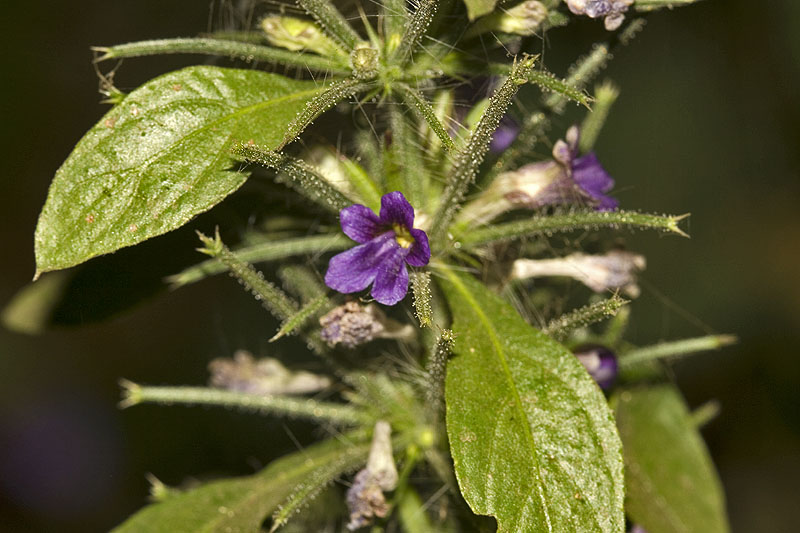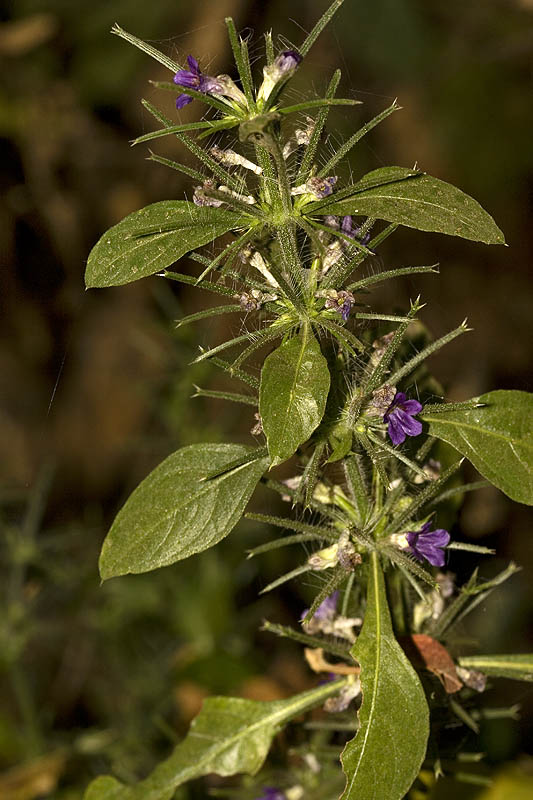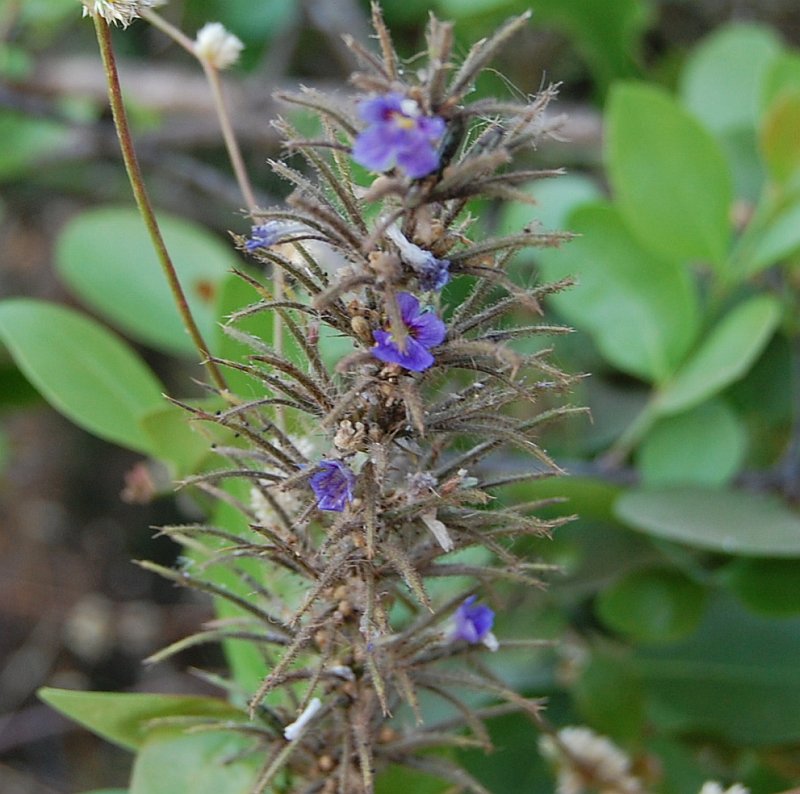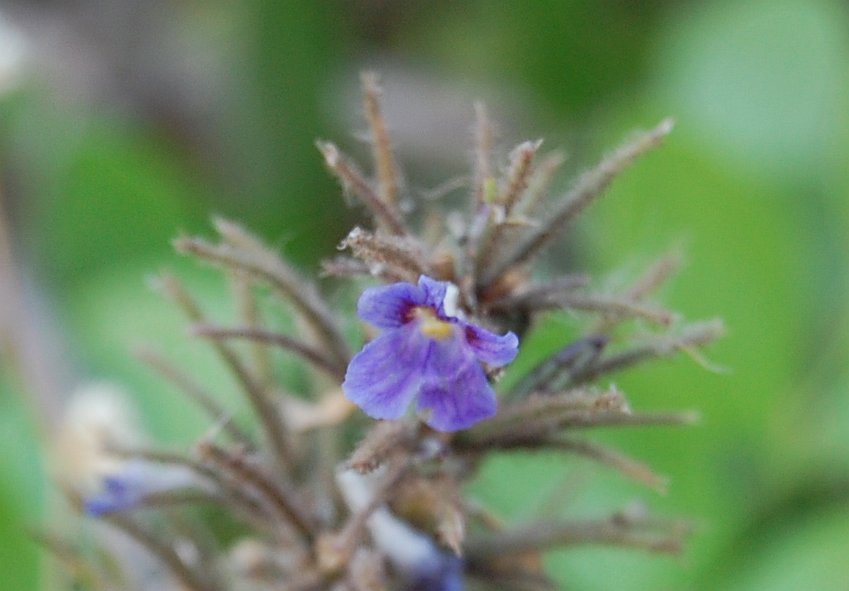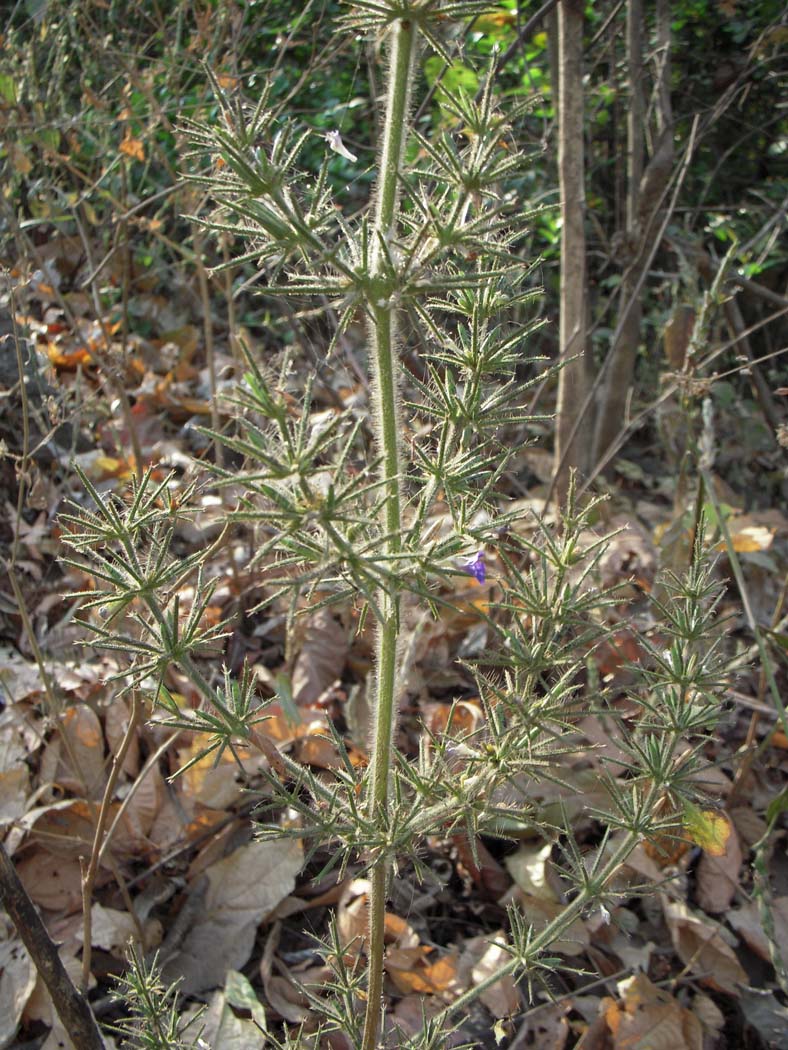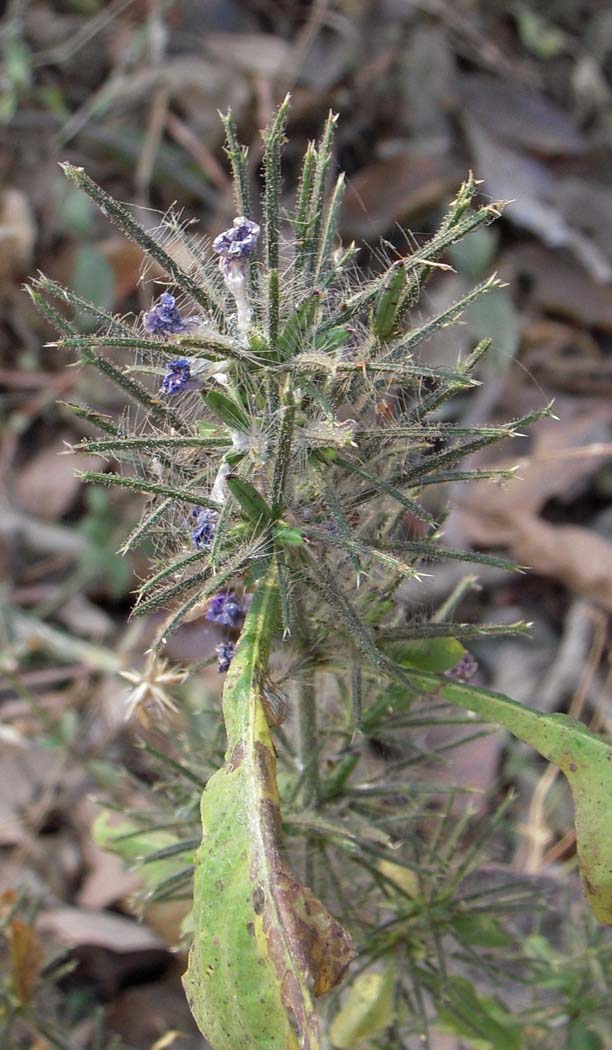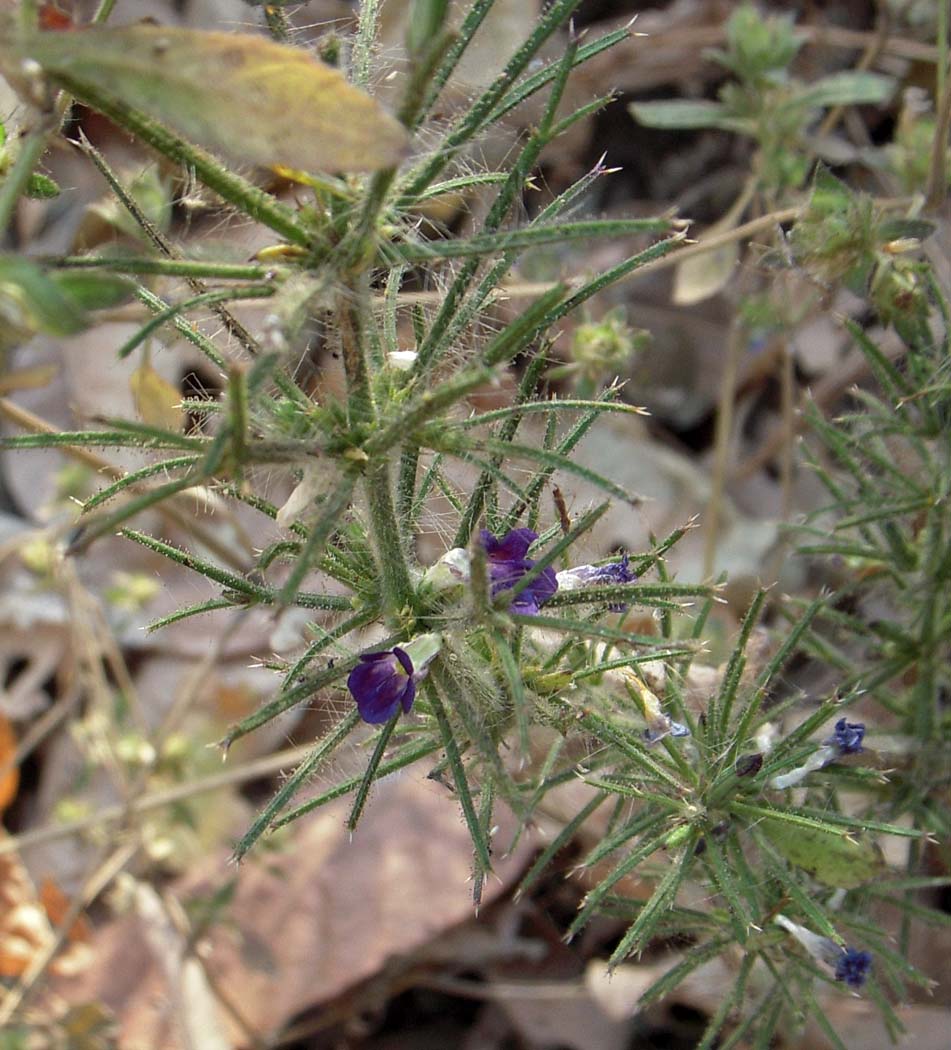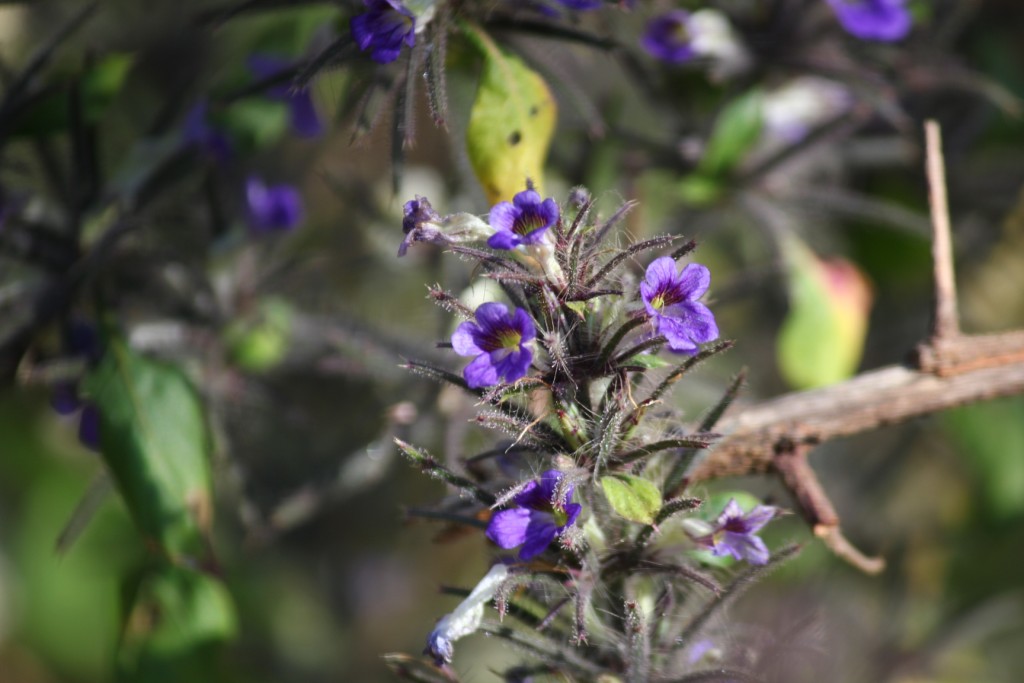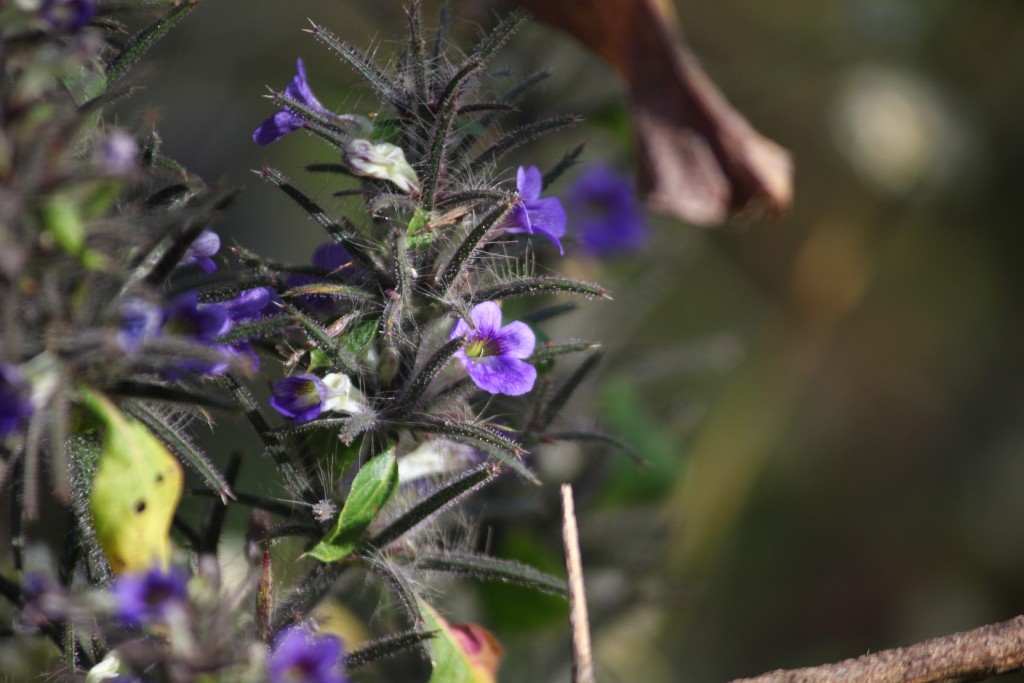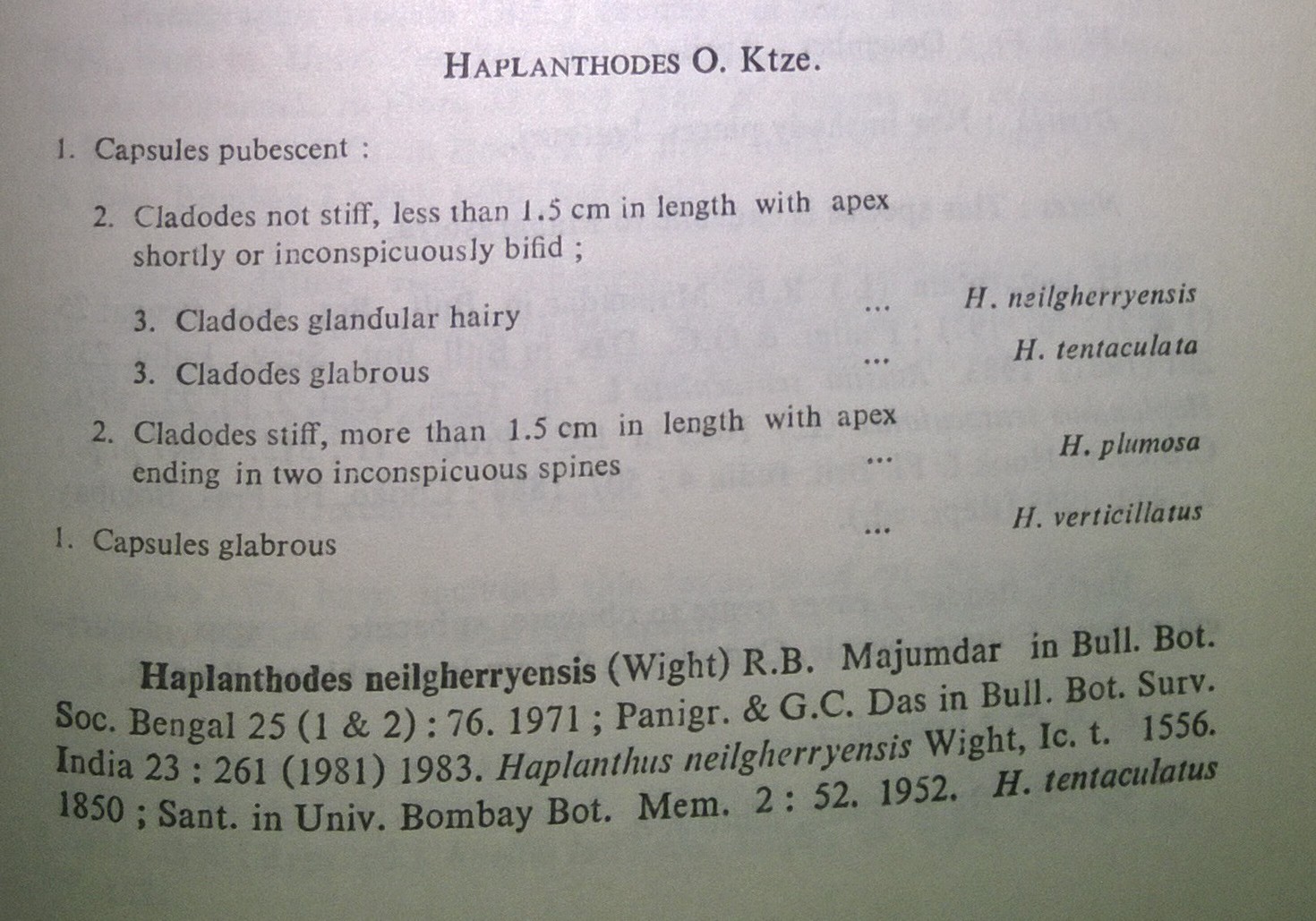
As per efi thread:
H. verticillatus has cladodes 2.5cm or longer, stiff, very sharp pointed bifid or rarely trifid …accidental prick is very painful, stinging. Plant about a meter tall or less, stout. Flowers light to deep shade of violet.
In H. tentaculatus cladodes are up to 1.5cm, soft, hairy, tip inconspicuously bifid, non-prickly. Three varieties can be recognised by cladodes… In var. plumosa cladodes are covered in dense soft white hairs, inflorescence which is actually terminal part of stem and branches, looking like plume. In var. neilgherryensis terminal spike of cladodes and flowers is densely packed, meaning by, internodes are very small. And of course cladodes not plumose. Var. tentaculatus seen in suitable habitat in Surat, is having cladodes sparsely hairy, nodes widely spaced. Cladodes are pointed upwards in Haplanthodes tentaculatus (Nees) Majumdar or its two other varieties, while these are pointed either straight or downwards in Haplanthodes verticillatus (Roxb.) R.B.Majumdar
Haplanthodes species in India:
References:
Keys as per efi thread:
1. Cladodes more than 1.5 cm long, bristly hairy; Capsule glabrous……………..H. verticillatus
1. Cladodes less than 1.5 cm, not bristly; Capsule pubescent……………………..2 2. Calyx not as above…………………………………………………………….………………H. tentaculata 2. Calyx sub plumose…………………………………………………………..………………..H. plumosa —————————–
Keys also available at
Species with description &
Endemic genera of Angiosperms in India: A Review by Sheeba J. Irwin* and D. Narasimhan Rheedea Vol. 21(1) 87-105 2 0 1 1 :
Haplanthodes nilgherrensis (Wight) R.B.Majumdar (syn. of Haplanthodes tentaculatus var. neilgherryensis as per New Names and Combinations in Indian Acanthaceae by John R. I. Wood (2014))
Haplanthodes plumosa (T.Anderson) Panigrahi & G.C.Das
Haplanthodes tentaculatus (L.) R.B.Majumdar
Haplanthodes verticillatus (Roxb.) R.B.Majumdar
Biodiversity in India, Volume 4 edited by T. Pullaiah (2006)- Details-
Haplanthodes tentaculata (L.) R.B.Majumdar (syn. Haplanthus tentaculatus (L.) Nees; Ruellia tentaculata L.)
Haplanthodes verticillata (ROXB.) MAJUMDAR (Syn. Haplanthus verticillata (Roxb.) Nees; Justicia verticillatus Roxb.)
Flora of Eastern Karnataka, Volume 2 By N. P. Singh (1988) – Details-
Haplanthodes verticillatus (Roxb.) R.B.Majumdar (Syn. Haplanthus verticillatus (Roxb.) Nees; Justicia verticillata Roxb.)
Hot spots of endemic plants of India, Nepal and Bhutan (1996) by M. P. Nayar– Tropical Botanic Garden and Research Institute, 1996 – Science – 252 pages
Haplanthodes neilgherryensis (Wight) Majumdar; herb; common. W. Ghats. (syn. of Haplanthodes tentaculatus var. neilgherryensis as per New Names and Combinations in Indian Acanthaceae by John R. I. Wood (2014))
Haplanthodes plumosa (T. Anders.) Panigrahi & Das; vulnerable; herb.
Haplanthodes tentaculta (Linn.) Majumdar; herb; northern W. Ghats.
Haplanthodes verticillatus …
Haplanthodes page with images of species in efloraofindia : 1 post by 1 author.
Pl. go through Haplanthodes page with images of species in efloraofindia (done by me).
If you find any mis-identification, pl. let us know. If anybody can send images of other species of this genera (for incorporation in the website), it will be really nice. Also, if anybody is interested to take up the activity of inserting images on efloraofindia pages from efloraofindia posts, pl. let us know.
Haplanthodes page (Acanthaceae) with images of species in efloraofindia : 1 post by 1 author.
Pl. go through Haplanthodes page (Acanthaceae) with images of species in efloraofindia (done by me). If you find any mis-identification, pl. let us know. |
Haplanthodes
Updated on December 24, 2024



